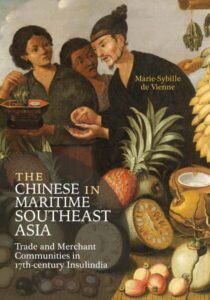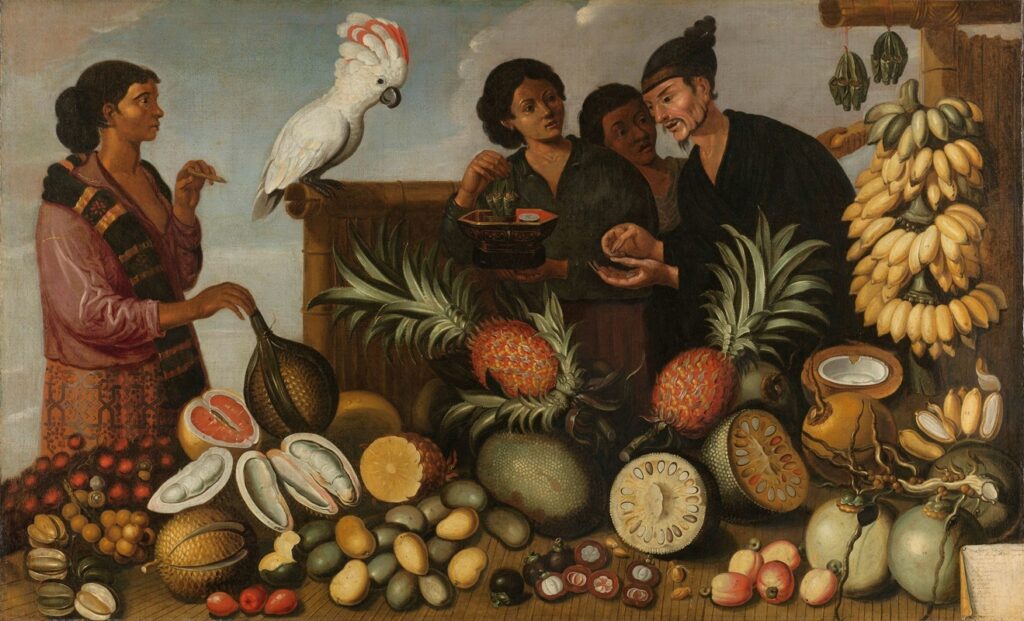Although no longer as true as it was, East Asian trade in the early-modern period is often presented from the perspective of one more Western nation or another: the Spain’s Manila Galleon trade, the Portuguese spice trade and unique base in Macau, the Dutch East India Company, and latterly, the British via Canton and Hong Kong. As Marie-Sybille de Vienne writes:
From the beginning of the European presence in Southeast Asian seas, Western analysts showed interest in the region, no doubt to take the measure of the zone, but also to flesh out a Western adventure conceived of as an extension of civilization. The underlying assumption was that the Europeans had opened up Southeast Asian trade through their search for spices—and for their own profit—and that these transactions were the driving force behind the region’s development. The subsequent transformation of European trading posts into powerful colonial agencies reinforced the discourse of European expansion as the structuring element of regional histories.

In The Chinese in Maritime Southeast Asia, Vienne turns this perspective inside out. The broad conclusions are perhaps what one has now come to expect: the Chinese were central to commerce and despite pretenses from, in this case the Dutch, that the foreigners were in charge, Chinese ships, traders and entire communities were pretty much running the show.
This is not perhaps a great surprise, but Vienne’s book is admirably (or horribly, depending on how easy a read you want) detailed: she dives deep in the archives of the VOC (Vereenigde Oostindische Compagnie, or Dutch East India Company) and summarizes her finding in dozens of tables, with (among others) chronological listing of ships, arrival and departures, goods and exchange rates. This is not a book for the faint-hearted.
Yet despite the tables, lists and often quite dense prose, a number of throughlines are clear, some of which run counter to the more common Western-centric narratives. One is that intra-Asian trade greatly exceeded, and was far more important than, the shipment of goods to Europe. A second is that the Chinese were heavily involved in this trade:
The Chinese not only carried out most of the trade carried out by Asian merchants between Batavia, Cochinchina, Cambodia, and especially Siam, … but also traded with the Philippines.
Chinese was itself a big buyer of such commodities as pepper. Prices, indeed, were driven more by the intra-Asian market than Western demand.
In terms of logistics, chinese ships greatly outnumbered Dutch ones:
The VOC’s maritime infrastructure (about 30 ships … at the end of the 17th century) was generally too weak to meet the Western demand for Chinese products. Products from the mainland were therefore imported to Batavia by Chinese junks, either directly or via Taiwan…
As well as Portuguese:
Macau’s trade was already in Chinese hands—no longer Portuguese—in the second half of the 17th century: of the 32 Macau origin junks listed in Batavia from 1660 to 1685, only 1 (in 1678) was qualified as “Portuguese”.
Vienne has extremely interesting sections on coinage, the make-up of the trade (tea replaced porcelain and silk as the most profitable product) and a deep-dive into the commercial organization of Batavia.
What is also striking here is there is enough data to begin to see the workings of what we would today call “an economy”: qualities, prices, competition, currencies, product substitution, supply bottlenecks, regulation, etc. It is, as one might expect, very complex; although Vienne focuses on the Chinese, they are the pivot around which all other parties are drawn in.
The Chinese in Maritime Southeast Asia was first published in 2009 as Les Chinois en Insulinde au XVIIe siecle: Echanges et sociétés marchandes. Its French origins are apparent in the use of “Insulindia”, a term rare in English, but the one “we prefer over the more anachronistic Indonesia, as the former includes both present Malaysia and Indonesia, as well as the Jawi regions of Southern Thailand, the Sulu Archipelago and the ancient sultanates of Mindanao.”
Whether a function of translation or revision, the book contains some curious misuse of terminology. “Margins” regularly exceed 100% (something impossible, since a margin is a percentage of the selling-price); one suspects what is meant here is “mark-up”. Elsewhere, Japanese silk demand is said to have experienced “a drastic 400% reduction”, similarly arithmetically impossible. These can be read informally as “big changes”, but raise some doubt as to what numbers and statistics precisely mean. There are in addition a few curious statements that perhaps lie out the author’s immediate expertise: one is the unfootnoted “In the Philippines, the Spaniards issued silver reals of the same value as those from home,” something which, if true, is news to me. Spanish silver coins were minted in the Americas and shipped to Manila.
The overall picture that Vienne paints should probably not come as a surprise. China was of course far larger than any other player in the region. But the wealth of data makes it palpable and the details bring out nuance in what was a far more complex commercial situation than the standard accounts.
The Chinese were of course also “foreign” in these markets. The picture Vienne draws of Chinese commerce dominating trade in its own backyard despite the nominal control of Western multinationals and local authorities, of Chinese commercial and political flexibility, and ultimate irreplaceability, should ring a few more modern bells.


You must be logged in to post a comment.